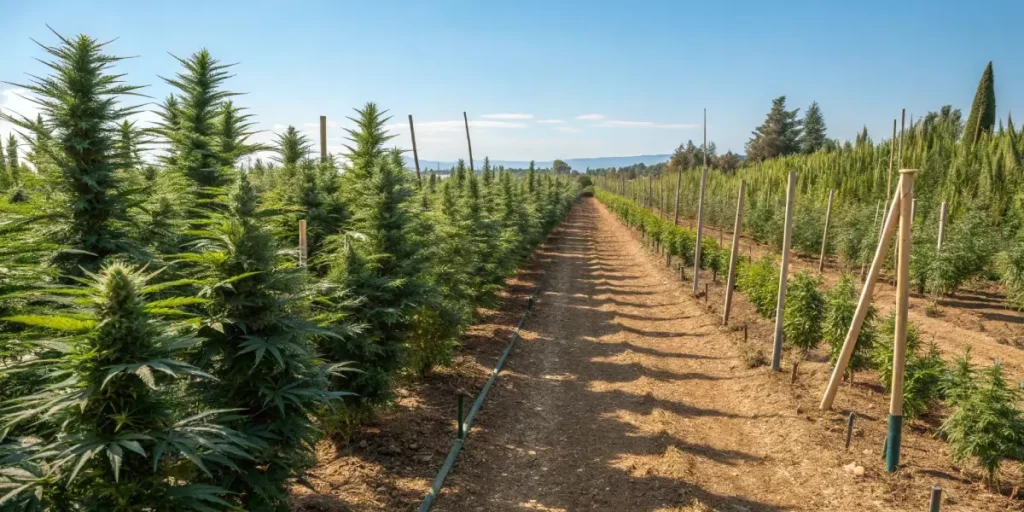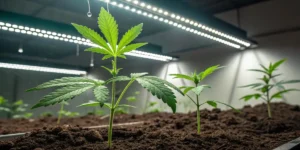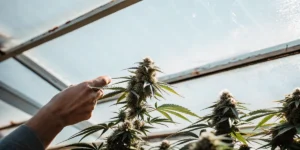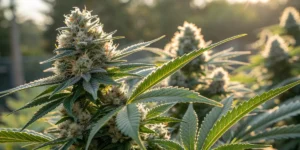Liberty Haze is a popular cannabis hybrid known for its potent effects and distinctive aroma. Originating from a cross between G13 and Chem Dawg 91, this strain offers a balanced blend of Sativa and Indica characteristics.Successfully cultivating this strain requires attention to detail and following a precise growing process. This guide will walk you through essential steps to achieve a bountiful harvest, from seed selection to flowering.
The first step in growing this variety is selecting high-quality seeds. Acquire seeds from a reputable supplier, ensuring they are fresh and stored properly. These seeds thrive in both indoor and outdoor environments, but for optimal control over environmental conditions, consider indoor cultivation. Prepare your growing medium, such as soil or hydroponics, ensuring it offers the right balance of nutrients and pH levels. A hydroponic system can enhance growth rates and yields if managed correctly.
Once your seeds have germinated, transplant the seedlings into your prepared medium. Plants prefer a warm, humid climate with temperatures between 70-85°F (21-29°C). Maintain humidity levels at around 40-50% during the vegetative stage, increasing to 50-60% during flowering. Provide ample light with full-spectrum LED or HID grow lights, ensuring a light schedule of 18 hours on and 6 hours off during the vegetative phase, transitioning to 12/12 during flowering.
Nutrient management is crucial for this strain. Begin with a balanced nutrient solution during the vegetative stage, gradually switching to phosphorus-heavy formulas during flowering to encourage bud development. Regularly monitor pH levels, aiming for a range between 6.0-6.5 in soil and 5.5-6.0 for hydroponics. Regular feeding and monitoring can prevent nutrient deficiencies and enhance plant vigor. Additionally, prune and top your plants to manage height and promote a more even canopy.
This strain flowers in about 9-10 weeks, requiring patience and care during this period. Monitor plants for signs of disease or pests, utilizing organic pesticides or beneficial insects to manage problems. As flowering progresses, the plants will produce dense, resinous buds imbued with the strain’s trademark lemon and lime aroma. Harvest once trichomes are milky white for a balanced high, or amber if you prefer a couch-lock effect.
Strain Overview: Traits, Effects & Genetics
Liberty Haze is a renowned hybrid cannabis strain that has gained popularity for its uniquely balanced effects and impressive genetics. Developed by Barney’s Farm, this strain is a cross between the G13 Haze and ChemDawg 91, giving it a remarkable heritage that cannabis enthusiasts appreciate. It offers a 60% Sativa and 40% Indica blend, making it versatile for a range of therapeutic and recreational uses. The plant is known for its medium to large, dense buds that are typically rounded and carry a mixture of rich lime and pale green hues, often accented with striking red and orange pistils.
The aromatic profile is compelling and complex, featuring citrusy lime notes complemented by a sweet floral undertone that enhances its appeal. When smoked or vaporized, it produces a smooth and pungent smoke that lingers with a hint of earthy spice—traits that contribute to its extraordinary sensory experience. The flavor mirrors its aroma, marked by a tangy and sweet lime taste that invigorates the palate. The terpene profile, rich in myrcene and limonene, plays a significant role in its unique smell and flavor, making it a favorite among connoisseurs.
In terms of effects, this strain is celebrated for providing a balanced high, offering the best of both worlds with Sativa and Indica characteristics. Users report an immediate uplifting cerebral buzz that enhances creativity, focus, and euphoria—ideal for social gatherings or artistic endeavors. As the high progresses, it is smoothly complemented by a relaxing body sensation that eases tension without fully sedating the user. This duality makes it suitable for daytime and evening use, providing a versatile experience for various cannabis consumers.
Genetically, it stands out due to its deep-rooted ancestry from superior strains, resulting in plants that are resilient and relatively easy to cultivate. Its flowering time averages around 8-9 weeks, and when grown in optimal conditions, can produce generous yields. Whether grown indoors or outdoors, this variety thrives in a balanced climate. The balanced genetics contribute to its robustness and adaptability, enabling it to flourish even in less-than-ideal growing environments. Overall, this is a standout strain that encapsulates powerful genetics, delightful sights and smells, and a balanced, rewarding high.
Optimal Environment to Grow Liberty Haze Successfully
Liberty Haze, a celebrated cannabis strain known for its potent effects and distinctive lime and pine aroma, thrives in a meticulously controlled environment. To grow this cannabis strain effectively, understanding the specific environmental conditions that best support its growth is crucial. This variety flourishes in both indoor and outdoor settings, but achieving optimal yields requires strategic planning and implementation of the right conditions. Starting from temperature management to humidity control, each aspect of the growing environment plays a vital role in ensuring the plant’s health and potency.
Temperature is a critical factor in cultivating this strain. It finds its comfort zone when temperatures are maintained between 70°F to 80°F (21°C to 27°C) during the day. Nighttime temperatures should ideally drop to around 65°F to 70°F (18°C to 21°C). These temperatures mimic the natural habitat of cannabis and help in promoting vigorous growth and bud development. Exposing the plants to temperatures outside this range can stress the plant, potentially affecting both its yield and potency.
Humidity levels play another key role in the successful cultivation of this variety. During the vegetative phase, maintaining a relative humidity of 60% to 70% helps the plant absorb the maximum amount of nutrients while preventing water loss. As the plant transitions to the flowering phase, reducing humidity to about 40% to 50% is beneficial. This decrease helps prevent mold growth and bud rot, a common threat in cannabis cultivation that can significantly compromise the quality of your harvest.
Adequate light exposure is also paramount for the thriving development of this strain. During the vegetative stage, it benefits from 18-24 hours of light, mimicking long summer days. In the flowering stage, a light schedule of 12 hours on and 12 hours off is crucial to stimulate and sustain bud production. Using high-quality LEDs or HID lights can provide the necessary spectrum and intensity that this variety demands.
Besides temperature, humidity, and light, good airflow is essential in the grow room or tent for this strain. Proper circulation ensures fresh air exchange, encouraging vigorous growth and helping to prevent pests and diseases. Installing oscillating fans and exhaust systems can help maintain the right balance of CO2 levels while also averting hot spots within the grow space. Paying attention to these environmental details can significantly enhance the quality and quantity of your harvest.
Grow Room Setup for Liberty Haze Plants
Liberty Haze is a sativa-dominant hybrid cannabis strain known for its potent effects and distinctive lime and floral aroma.Ensuring an optimal grow room setup is crucial for cultivating healthy plants. One key consideration is space management, as these plants can reach significant heights during the flowering stage. A grow area with a ceiling height of at least six feet is recommended to accommodate their upward stretch comfortably. Moreover, providing sufficient horizontal space allows for proper airflow and light penetration, promoting healthier growth and bigger yields.
Temperature and humidity control are vital components of any successful grow room setup, particularly for this strain. It thrives in a climate that mimics Mediterranean conditions. Maintain temperatures between 70-80°F during the day and slightly cooler at night to mimic a natural environment. Humidity levels should be kept around 40-50% during the vegetative phase and lowered to 30-40% during the flowering phase to prevent mold and mildew issues. Using a reliable thermostatic controller and a dehumidifier can help maintain these levels effectively.
Lighting is another crucial aspect of the grow room. Given its sativa-leaning genetics, this variety benefits from a lighting setup that mimics natural sunlight as closely as possible. High-intensity discharge (HID) lamps or full-spectrum LED lights are recommended to provide ample light energy. A schedule of 18 hours of light and six hours of darkness is optimal during the vegetative stage, while transitioning to 12/12 light schedule is ideal for inducing flowering, ensuring the plants receive sufficient light exposure for photosynthesis while enabling their natural growth cycle.
Ventilation is often overlooked but plays a critical role in ensuring robust plant development. Active airflow prevents the formation of hotspots around your plants, which can lead to heat stress. Proper intake and exhaust systems help maintain optimal CO2 levels, crucial for photosynthesis. Consider installing oscillating fans to enhance air circulation within the grow room, ensuring that every part of the plant receives adequate air exchange. This setup helps prevent the development of mold and promotes stronger, healthier plants.
Lastly, choosing an appropriate growing medium is pivotal for your setup. This strain can be cultivated successfully in soil or hydroponic systems. Organic soil that is rich in nutrients is an excellent choice for those who prefer more traditional methods. Alternatively, hydroponics offers greater control over nutrient delivery, potentially maximizing growth rates and yields. Regardless of your choice, ensuring that the medium supports healthy root development is essential, as this directly impacts the plant’s overall health and productivity.
Indoor Growing Tips
Liberty Haze is a popular cannabis strain renowned for its balanced effects and unique lineage, blending G13 and Chem Dawg 91. When growing this particular strain indoors, it is crucial to replicate its natural environment to optimize growth and potency. This variety benefits from a stable climate and controlled conditions, making it an excellent choice for indoor growers who can manipulate factors like light, humidity, and temperature. Properly managing these elements can enhance both yield and quality, ensuring a rewarding cultivation experience.
Lighting is one of the most critical aspects of growing indoors. This strain thrives under a robust light system, with high-intensity discharge (HID) or LED lights being ideal. Maintain a light schedule of 18 hours of light and 6 hours of darkness during the vegetative stage. Transition to a 12/12 light cycle when you’re ready to initiate the flowering stage. Ensure the lights are kept at an appropriate distance from the canopy to prevent light burn but close enough to promote dense bud development.
Humidity and temperature control are vital for the optimal growth indoors. During the vegetative stage, aim for a humidity level of around 40-60%. In the flowering phase, reduce this to 30-40% to prevent mold and promote resin production. Keep the temperature within the range of 70-85°F (21-29°C) during the day, slightly cooler at night. Utilizing oscillating fans can help increase air circulation, thereby preventing hot spots and reducing pest infestations.
Pruning and training techniques are beneficial, particularly in indoor setups where space can be limited. Techniques such as topping, low-stress training (LST), and the Screen of Green (ScrOG) method can help manage plant height and maximize light exposure, resulting in a more uniform canopy and potentially higher yields. Regular monitoring for pests, nutrient deficiencies, and other stress signals is also crucial; this strain is generally resilient but benefits from a proactive approach to plant health.
Lastly, feeding the right nutrients at the right time can significantly impact harvest quality. During the vegetative stage, use a nitrogen-rich fertilizer to support leafy growth, while in the flowering phase, switch to bloom fertilizers higher in phosphorus and potassium. Always ensure pH levels remain balanced, ideally between 6.0 and 7.0, to facilitate optimal nutrient absorption. By meticulously managing these various growing conditions, this variety can flourish indoors, providing a bountiful yield of potent, aromatic buds.
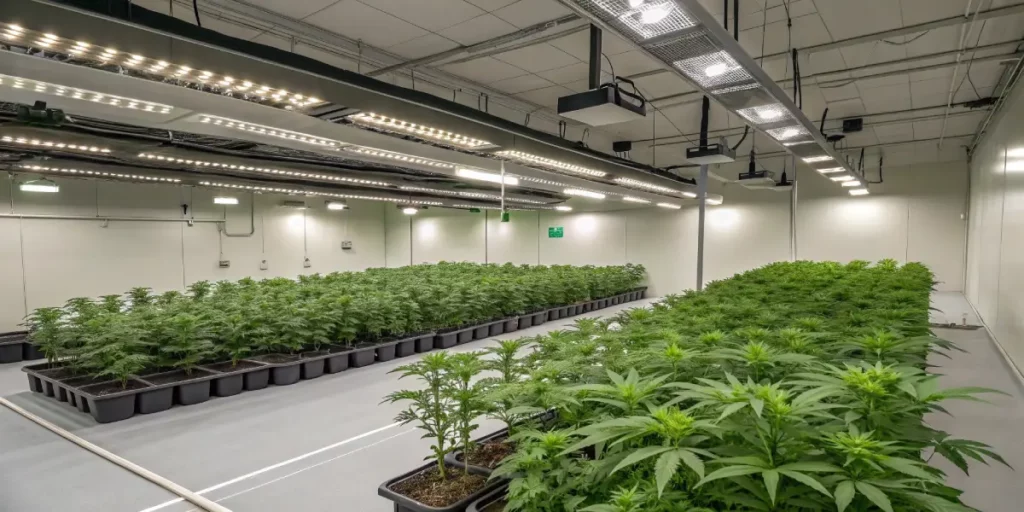
Outdoor Growing Tips
Liberty Haze is a prominent and popular cannabis strain known for its robust hybrid genetics, combining the best of both indica and sativa characteristics. When cultivating outdoors, selecting the right spot is crucial. Choose a location with abundant sunlight exposure, ideally receiving at least eight to ten hours of direct sunlight daily. The more sunlight, the better the plants will photosynthesize, leading to vigorous growth and higher yields. Additionally, ensure the area is well-ventilated for good air circulation to prevent mildew and other plant diseases.
Soil quality is another vital aspect to consider when growing cannabis outdoors. Use high-quality, nutrient-rich soil to provide the essential nutrients necessary for healthy growth. The ideal soil should be well-draining to avoid waterlogging, which can lead to root rot and other issues. Many growers enrich their soil with organic matter such as compost or well-rotted manure to improve moisture retention and nutrient content. Regularly testing and adjusting the soil pH to a range of 6.0 to 6.5 will help the plants thrive, as cannabis prefers slightly acidic conditions.
Pay attention to watering practices, as both overwatering and underwatering can negatively affect outdoor cannabis plants. It is crucial to maintain a consistent watering schedule that balances moisture without saturating the soil. Since outdoor conditions can vary greatly, monitor the weather and adjust watering frequency accordingly. Mulching around the base of the plants can help retain soil moisture and regulate temperature fluctuations. Additionally, regular pruning and training methods such as topping or LST (low-stress training) can encourage bushier growth and increase bud production, ultimately leading to more fruitful harvests.
Pest and disease control is another important consideration for outdoor cultivation. Keep an eye out for common pests like aphids, spider mites, and caterpillars, as well as fungal diseases such as powdery mildew. Employ integrated pest management techniques, including organic pesticides, neem oil, and beneficial insects, to protect your crop. Regularly inspecting your plants and maintaining a clean growing environment can significantly reduce the risk of infestation and disease, ensuring the health and vitality of your outdoor cannabis plants.
How to Germinate & Propagate Liberty Haze
Liberty Haze, a well-celebrated cannabis strain, is cherished for its unique blend of flavors and effects. To begin your journey with this cannabis strain, successful germination is crucial. The most effective method for germinating it is the paper towel technique. Start by soaking the seeds in water for 12-24 hours until they sink, indicating that water has penetrated the shell. After soaking, place the seeds between two damp paper towels on a plate, ensuring the towels remain moist but not soaked. Cover the seeds with another plate to maintain darkness and humidity, essential conditions for sprouting.
The ideal environment is critical to successful germination. Maintain a temperature range of 70-85°F (21-29°C) and ensure proper ventilation to facilitate the growth process. Within three to seven days, you should observe tiny white roots emerging from the seeds. When the roots reach approximately half an inch in length, it’s time to transfer them to their growth medium. Choose an airy and well-draining medium like coco coir or seed-starting soil to promote healthy root development. Bury the seeds about a quarter-inch deep, root side down, and lightly cover with soil.
Once germinated, this strain can be propagated to support a flourishing garden. Cloning is a preferred method of propagation, allowing you to produce genetically identical plants from the parent. To propagate through cloning, select a healthy, mature plant and prepare a clean, sharp cutting tool. Cut a branch about 4-6 inches long with at least two or three leaves and dip the cutting’s end in a rooting hormone. Plant the cutting into a moist growing medium such as rock wool or perlite and keep it under a humidity dome to encourage root development.
Proper care is vital during the propagation phase. Ensure that the cuttings receive 18-24 hours of light daily, such as fluorescent lights, to prevent stretching and promote robust growth. Maintain a humid environment initially, around 70-80%, gradually reducing humidity as roots develop. Within two weeks, new roots should begin to form, signaling successful propagation. As your plants grow, they will require regular feeding and pruning to maximize yields and health. By mastering the germination and propagation process, you’ll set a strong foundation for a productive and rewarding cannabis cultivation experience.
Vegetative Stage: Nurturing Your Liberty Haze Plants
During the vegetative stage, your Liberty Haze plants focus on establishing strong roots and ample foliage to support healthy flowering in the later stages. This period is crucial for maximizing the plant’s potential yield, so providing the right environment and care is essential. This strain, known for its resilience and robust growth, thrives under optimal conditions, where you can expect vigorous development. It benefits from a consistent light schedule, ideally 18 to 24 hours of fluorescent or LED light per day, to stimulate growth and prevent early flowering.
Proper nutrition is key during the vegetative stage. Introduce a balanced nutrient regimen rich in nitrogen, which supports foliage development. It’s recommended to start with half-strength nutrient solutions, gradually increasing to full strength as the plants demonstrate the ability to handle it. Monitor the pH level of the soil or hydroponic solution, keeping it between 5.8 and 6.5. This ensures nutrient absorption is at its peak efficiency. Over-fertilization can lead to nutrient lockout, so regular monitoring and adjustments are crucial to avoid nutrient burn.
Watering plays a critical role in maintaining plant health during the vegetative stage. The goal is to maintain a consistent level of moisture without oversaturating the medium, which could lead to root rot. Ensure the pots have adequate drainage and allow the top centimeter of soil to dry out between waterings. This approach prevents overwatering and encourages root development. Additionally, during this growth phase, ensure adequate airflow around your plants to reduce the risk of mold and pests that thrive in stagnant environments.
Training techniques such as topping, low-stress training (LST), or the ScrOG method are particularly effective given the natural bushy structure of this strain. These methods encourage even canopy development and enhance light penetration to lower branches, boosting overall yield. Carefully apply these techniques, recognizing that the flexibility and resilience of the plants can withstand moderate stress. Regularly inspect your plants for signs of pests or diseases, and address any issues immediately to prevent setbacks in development.
Flowering: What to Expect
The flowering stage of Liberty Haze is a critical period where you’ll witness the full potential of this renowned strain. This hybrid strain has earned a reputation for its unique characteristics and robust growth. When entering the flowering stage, expect to see significant changes in both the physical structure and chemical profile of the plant. This stage typically spans about 8 to 10 weeks, at which point the cannabis plants will begin to produce the high-quality buds that this strain is known for.
During the flowering phase, the plant will exhibit substantial vertical growth. It’s important to monitor the height and spacing to ensure optimal light exposure and air circulation. The strain is known for its vibrant green foliage and sturdy stems, capable of supporting the fattening buds. Adequate support systems such as trellises or stakes may be beneficial to prevent any breakage or bending. As the plants mature, the buds will start developing their characteristic large, dense, and trichome-rich structure, which is indicative of a healthy flowering process.
The flowering is also marked by its distinct aromatic profile. Growers can expect a potent mix of earthy, citrus, and pine notes emanating from the flowers as they develop. This is a sign that the plant is producing its unique terpene profile. Additionally, the psychoactive compound THC tends to increase significantly during the flowering stage, contributing to the strain’s powerful cerebral effects. Regular monitoring of these changes through visual inspections and, if possible, laboratory testing can help ensure the buds are harvested at their peak potency.
One of the most crucial aspects during the flowering period is maintaining proper environmental conditions. The ideal temperature range is between 70 to 80°F (21 to 27°C) with humidity levels around 40-50%. It is also essential to regulate light schedules, typically requiring a 12-hour light and 12-hour dark cycle to support the flowering process. Close attention to these environmental details will help maximize yield and quality, ensuring that the plants fulfill their potential by the end of the flowering stage.
Feeding: Fertilizers & Nutrient Schedule
Liberty Haze is a hybrid cannabis strain known for its potent effects and vibrant growth, requiring a well-tuned nutrient regimen to reach its full potential. When cultivating this strain, it’s crucial to provide a balanced diet that meets its specific needs through each stage of growth. The focus should be on providing ample macronutrients such as nitrogen, phosphorus, and potassium (N-P-K), particularly adjusting the ratios to suit the vegetative and flowering phases. This variety thrives with a high-nitrogen formula during the vegetative phase to promote robust leaf and stem development.
As the plant transitions to the flowering stage, the nutrient schedule should emphasize phosphorus and potassium to support bud formation and density. Utilizing a bloom-specific fertilizer with higher P and K content will enhance the overall quality and yield of the flowers. Organic fertilizers can be advantageous, offering a more controlled nutrient release, which aids in preventing the risk of nutrient burn—a common issue with synthetic feeds. A solution with a balance close to 5-10-10 (N-P-K) is often suitable during this period.
Additionally, these plants benefit from secondary macronutrients like calcium and magnesium, as they support cellular structure and photosynthesis. It’s advisable to integrate a calcium-magnesium supplement into the nutrient schedule. Regular monitoring of pH levels is also paramount, ensuring they remain in the optimal range of 6.0 to 6.8 for soil-based grows or slightly lower for hydroponic systems, maintaining nutrient absorption efficiency.
Monitoring the plant’s response to the feeding schedule is key. Observing leaf color, growth rate, and overall vigor will inform any necessary adjustments to the nutrient mix or feeding frequency. Weekly or bi-weekly flushing with plain water can help prevent nutrient lockout, ensuring a clean supply of vital nutrients. With meticulous attention to its nutritional needs, growers can expect a healthy, bountiful harvest.
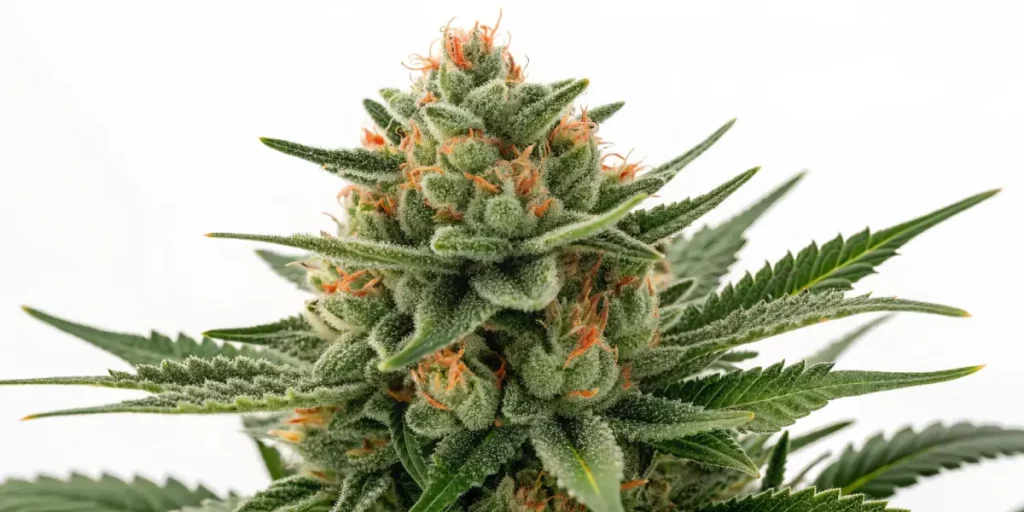
Pest and Disease Prevention for Healthy Cannabis Plants
Cultivating Liberty Haze, like any cannabis strain, involves proactive pest and disease management to ensure a robust crop. This strain, celebrated for its potent THC levels and refreshing lime flavor, thrives best when growers prioritize preventive care. Essential to this is understanding the local pest profile and potential disease pressures that might affect cannabis cultivation. A comprehensive approach, integrating physical, cultural, and biological controls, will best support healthy Liberty Haze plants.
Begin with maintaining optimal environmental conditions, as robust plant health starts with the proper growing environment. Ensuring ideal humidity and temperature levels deters common pests and pathogens that thrive in less-than-optimal conditions. Consistent monitoring of your grow room or outdoor space for fluctuating environmental conditions can help in early identification of potential problems, thus minimizing the risk of infestations and disease. Use fans and dehumidifiers as needed to create a hostile environment for pests and to prevent mold.
Incorporating companion planting and beneficial insects into your cultivation practices offers natural pest control. Marigolds, for instance, are known to repel nematodes, while ladybugs can help to keep aphid populations in check. Introducing natural predators such as predatory mites into your setup can also enforce a natural balance, effectively reducing pest populations without resorting to chemical interventions. This approach not only manages unwanted insects but also promotes biodiversity in your grow area.
Regular inspection of your Liberty Haze plants is crucial. Look for any signs of leaf discoloration, wilting, or unusual spots that could indicate emerging pest or disease issues. Early detection allows for quick management, preventing a minor issue from becoming a major problem. Likewise, removing any affected parts of the plant can limit the spread of diseases. It is also beneficial to keep a clean grow environment through regular removal of fallen leaves and debris that could harbor pests.
If pest or disease pressures exceed manageable levels, organic pesticide options should be your first line of defense to minimize potential harm to your plants and environment. Neem oil, diatomaceous earth, and insecticidal soaps can effectively control pests without harming beneficial insects. Rotate treatments to reduce the risk of pests developing resistance. Consistent application as per manufacturer instructions can yield effective control without compromising plant health or quality.
Ultimately, the successful cultivation of Liberty Haze relies on an integrated pest management plan that combines varied strategies for the preservation of plant health. By creating a balanced ecosystem and monitoring your plants regularly, you can mitigate the impact of pests and diseases, ensuring a high-quality harvest. The dedication to plant vigilance and knowledgeable intervention will reward growers with a successful yield of this popular cannabis strain.
Harvesting & Drying Liberty Haze the Right Way
Harvesting Liberty Haze at the optimal time is essential to maximize its potent effects and unique aromas. Typically, this strain is ready to be harvested between eight to ten weeks of flowering, depending on your specific growing conditions. The best indicator for readiness is the color change in the trichomes. When trichomes shift from a clear to a milky white appearance, with some turning amber, it signals that the cannabinoids have reached peak potency. It’s advisable to regularly check the trichomes using a magnifying glass or a jeweler’s loupe to ensure you harvest at the right moment.
Once you’ve determined that your plants are ready for harvest, timing and method are crucial. Harvest during the early morning hours if possible, when the plant’s terpene profile is richest, resulting in a more flavorful yield. Carefully cut the plants at the base, preserving as many branches as possible. Handle the buds gently to avoid damaging the valuable trichomes, which contain the sought-after cannabinoids and terpenoids specific to this strain.
Drying your crop correctly is as important as timing your harvest. Begin by trimming the large fan leaves and then hang the plants upside down in a dark, cool space with adequate ventilation. The drying room should maintain a temperature of about 60-70°F (15-21°C) and a humidity level of 45-55%. These conditions help prevent mold and ensure a slow drying process, which is crucial for preserving the delicate terpene profiles and cannabinoids found in this variety.
The drying process generally takes around 7-10 days. Check the buds daily to ensure they are drying evenly. You’ll know they’re adequately dried when the smaller stems snap rather than bend. When drying is complete, cut the buds from the branches and prepare them for curing. Properly dried buds should retain their rich, unique aroma and flavor, characteristic of this spirited strain. It’s these finishing touches that unlock the true potential of your yield.
After drying, the last crucial step is curing. Place the dried buds into airtight glass jars, filling them about three-quarters full to allow some air circulation. Store these jars in a cool, dark place, opening them daily for about 15-30 minutes to release any excess moisture and to allow for fresh air exchange. This process, known as burping, should continue for at least two weeks, although longer curing periods can further enhance the smoothness and depth of the strain’s unique flavors. Proper harvesting, drying, and curing will reward you with cannabis that boasts full-bodied flavors and potent effects.
Liberty Haze Strain Type: Indica, Sativa or Hybrid?
Liberty Haze is a remarkable cannabis strain characterized by its hybrid nature, skillfully balancing sativa and indica properties. Bred by the renowned Barney’s Farm, this strain is a cross between two popular varieties: the fast-flowering G13, known for its potent indica effects, and ChemDawg 91, appreciated for its sativa-like qualities. This union creates a variety that offers the uniqueness of both parental lines, displaying a harmonious blend of effects that cater to a wide range of user preferences and medical needs.
Being a hybrid, this variety possesses the euphoric, cerebral effects often associated with sativa strains, paired with the relaxing, body-focused sensations typical of indicas. This makes it a versatile choice for consumers who seek an uplift in mood and creativity while simultaneously desiring the soothing relaxation characteristic of indica strains. Users often report an initial rush of energy and happiness that gradually transitions into a more laid-back and tranquil state, making it a viable option for use both day and night. The proportionate combination allows it to deliver a well-rounded experience that appeals to recreational and medicinal users alike.
Despite being a balanced hybrid, this strain is known to lean slightly sativa-dominant in its effects, providing benefits such as increased focus, enhanced mental clarity, and stimulation without overwhelming tiredness or couch-lock effects that pure indicas might induce. This makes it particularly beneficial for creative pursuits, social activities, or tasks that require a clear head and a touch of inspiration. Its sativa influence ensures an uplifting experience, while the indica component provides a gentle, calming experience, preventing overstimulation or anxiety, which can sometimes result from high-potency sativa strains.
Ultimately, the hybrid nature of this variety makes it an ideal candidate for those seeking a balanced cannabis experience, evidenced by its stimulating yet calming effects. Its versatility can appeal to various consumers, whether they prioritize productivity and focus, or relaxation and relief from stress or physical discomfort. This strain truly embodies the best qualities of both sativa and indica, making it a favored choice among hybrid enthusiasts looking to enjoy the interplay of energetic yet relaxing effects.
Why Grow Liberty Haze? Key Benefits for Cultivators
Liberty Haze is a highly sought after hybrid cannabis strain, famous for its unique blend of effects and flavors. One of the primary reasons cultivators choose to grow this strain is its rapid flowering time. Typically, it will be ready for harvest within 8 to 9 weeks, making it an excellent choice for those looking to maximize their grow cycles throughout the year. The quick turnaround offers an impressive yield, providing greater economic value to both commercial and personal cultivators.
Another compelling reason to grow this variety is its robust resilience against common pests and diseases. The strain is known for its hardy nature, making it an ideal option for both novice and experienced growers. This resilience minimizes the need for intensive pest management strategies, reducing the overall costs and labor associated with cultivation. Its adaptability to various grow settings, including indoors, outdoors, and greenhouse environments, further highlights its versatility and ease of growth.
This strain is also noted for producing a high-quality product, characterized by its excellent THC content and distinctive aroma. It’s often chosen for its potent cerebral effects and balanced indica-sativa makeup, which appeals to a broad range of cannabis consumers. The unique aromatic profile—blending citrus, spice, and earth—offers a sensory experience that starts in the garden and extends to the final consumption. This high consumer demand ensures that cultivators can achieve profitable margins when selling their harvest.
Moreover, its genetic lineage, derived from the award-winning G13 and ChemDawg strains, contributes to its celebrated stability and consistency in terms of both yield and potency. This reliable performance is invaluable for growers aiming to produce consistent batches with each grow cycle. Cultivators appreciate how this variety maintains its quality and does not require excessive tuning or modification to achieve the desired outcomes, thus simplifying the cultivation process.
Overall, the reasons to grow this strain extend beyond its impressive yields and expedited grow cycles. Its resilience to pests, strong market demand, and ease of cultivation make it a standout choice for cultivators who seek a profitable and hassle-free growing experience. This variety not only enriches the portfolio of any grower but also contributes to the thriving diversity of the cannabis market.
Potential Challenges When Growing Liberty Haze
This strain presents an intriguing opportunity for growers, offering a unique blend of characteristics and a striking sativa-dominant profile. However, due to its specific requirements and traits, cultivating it can present several challenges. One of the primary issues growers may encounter is the plant’s sensitivity to humidity levels and temperature fluctuations. It thrives in a stable environment, requiring carefully regulated temperature and humidity to maximize its yield and potency. Indoor growers, in particular, will need to invest in appropriate climate control systems to maintain optimum growing conditions.
Another significant challenge when growing this variety is its relatively lengthy flowering period, often stretching to 9-10 weeks. During this time, the plant requires constant monitoring and maintenance, as well as a consistent nutrient regimen to support its growth. For growers who are impatient or on a tight schedule, this extended period can be a drawback. Additionally, ensuring the plant receives the right balance of nutrients while avoiding common problems such as nutrient burn or deficiencies is crucial, which often calls for an experienced hand.
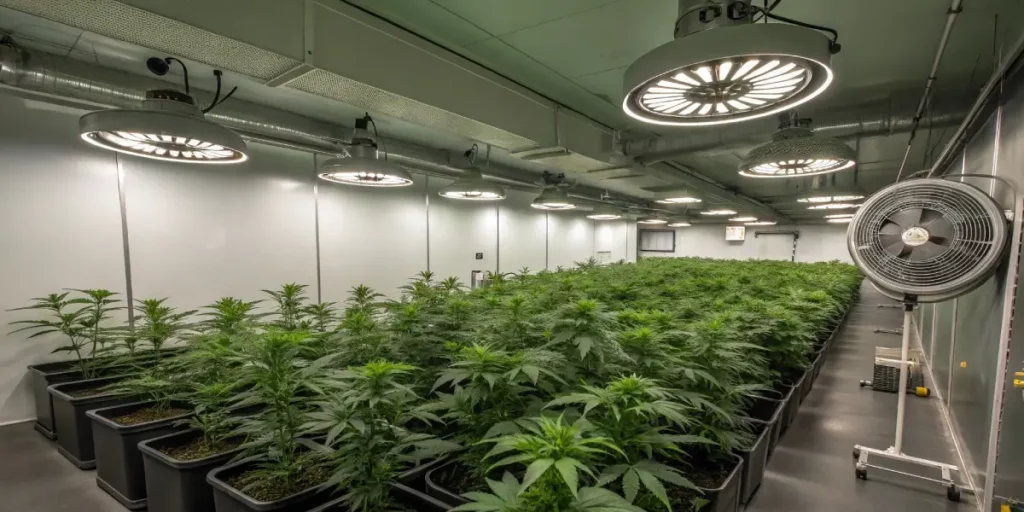
Is Liberty Haze Worth Buying? Here’s What You Need to Know
Liberty Haze is a hybrid cannabis strain that has quickly gained popularity among growers and users alike, thanks to its unique combination of effects and manageable growing conditions. This strain is a cross between G13 and ChemDawg 91, which gives it a balanced mix of indica and sativa characteristics. One of the main reasons growers are attracted to this strain is its reputation for producing high yields and potent buds with a THC content ranging from 25% to 28%. However, its high potency might not be suitable for novice users, so it’s essential to consider your tolerance levels before purchasing.
Another reason to consider investing in these seeds is the plant’s relatively short flowering period of 8 to 9 weeks. This is ideal for those looking to harvest quickly and efficiently. Additionally, this variety thrives both indoors and outdoors, which provides flexibility in terms of growing conditions. Its resilience against common molds and mildews makes it a great choice for growers who are just starting out or who may have less than ideal environmental controls. However, like any plant, it requires consistent care, particular attention to humidity levels, and a nutrient-rich soil to truly flourish.
Besides its appealing growing traits, this strain offers a unique and sought-after experience for users. The strain provides a well-balanced high that starts with cerebral stimulation and gradually transitions into a calming body relaxation. This makes it a versatile choice for both daytime and evening use. Its flavor profile is a delightful blend of earthy, citrus, and slightly woody notes that many users find both refreshing and complex. Before making your decision, it’s crucial to weigh the benefits against your personal preferences and growing capabilities. If you’re seeking a high-yield, potent strain with a balanced effect, this variety could very likely be worth the investment.
FAQs
What is Liberty Haze?
Liberty Haze is a popular cannabis strain renowned for its distinct genetic blend and potent effects. It is a hybrid strain developed by Barney’s Farm, typically combining the qualities of G13 and Chemdawg 91, leading to a balanced mix of both indica and sativa effects. Cultivated for its notable THC content, Liberty Haze offers a cerebral high combined with a relaxed body feel, making it highly sought after for both recreational and medicinal use.
What are the main effects of Liberty Haze?
The main effects of Liberty Haze include a euphoric and uplifting sensation that often enhances mood and creativity. Many users report feeling a strong cerebral high initially, which stimulates mental clarity and focus. As the high progresses, a gentle and soothing body relaxation ensues, helping to alleviate stress and physical tension without causing couch lock. These qualities make it suitable for daytime use and social activities.
What is the aroma and flavor profile of Liberty Haze?
Liberty Haze boasts a unique and appealing aroma characterized by citrus, lemon, and earthy undertones. The flavor is often reported to be tangy and sharp, with hints of lime and pine upon exhale. This refreshing combination of scents and tastes makes Liberty Haze a favorite among connoisseurs who appreciate the nuances of cannabis flavors, enhancing both the olfactory and gustatory experience.
Is Liberty Haze suitable for medicinal use?
Yes, Liberty Haze is frequently utilized for medicinal purposes. Its uplifting and mood-boosting properties make it effective for treating symptoms of depression and anxiety. Additionally, the relaxation it provides can help alleviate physical discomfort, such as chronic pain and muscle tension. Patients have also reported using it to combat fatigue and stimulate appetite, making it a versatile strain for various medical needs.
How do you grow Liberty Haze, and what are its cultivation requirements?
Liberty Haze is relatively easy to cultivate, making it a good choice for both novice and experienced growers. It typically thrives in a controlled indoor environment but can also be grown outdoors in temperate climates. The plant is known for its fast flowering time, usually around 8-9 weeks, and produces high yields of dense, resinous buds. Additionally, Liberty Haze requires regular trimming and care to ensure adequate light exposure and airflow, which are essential for maximizing its growth and potency.

